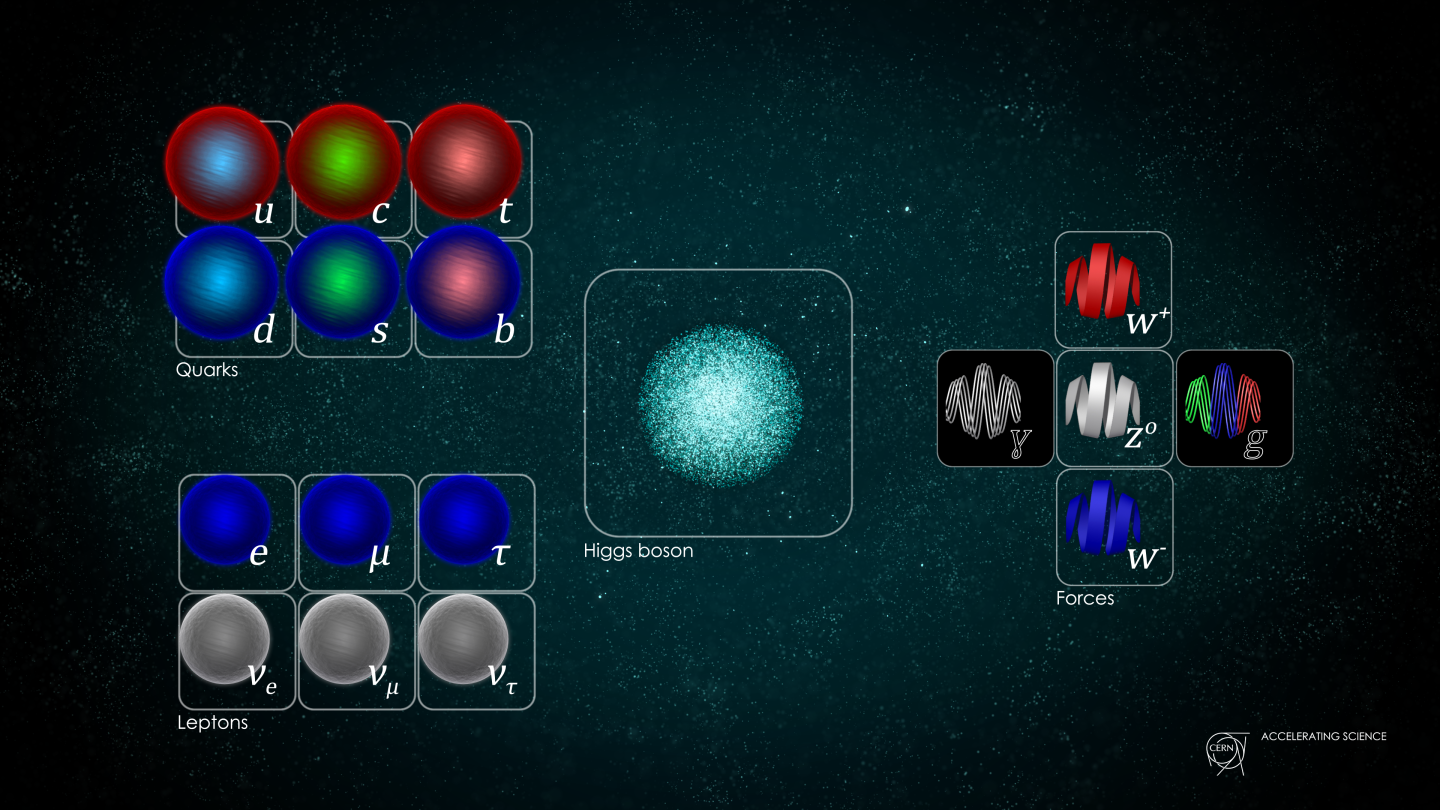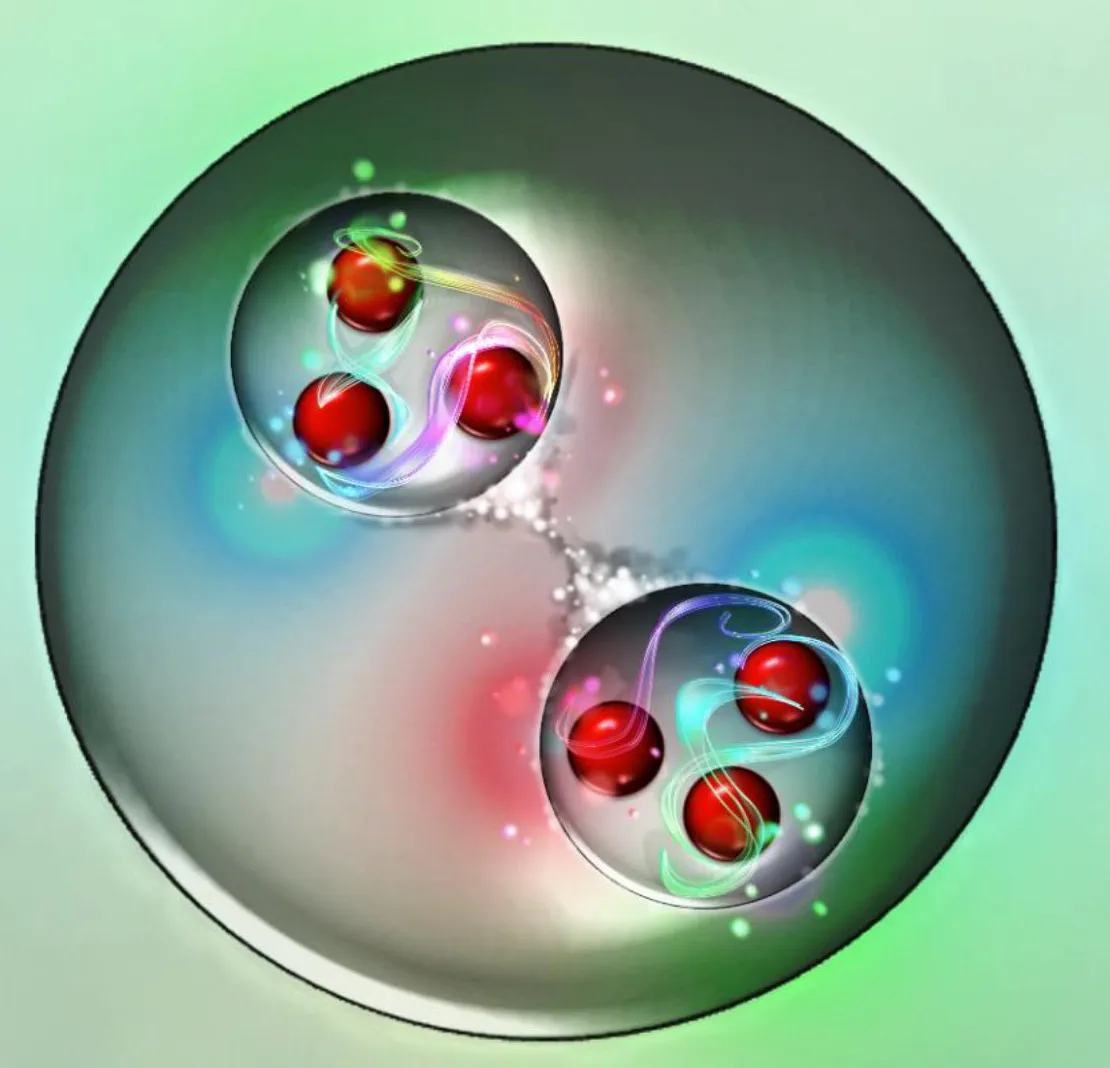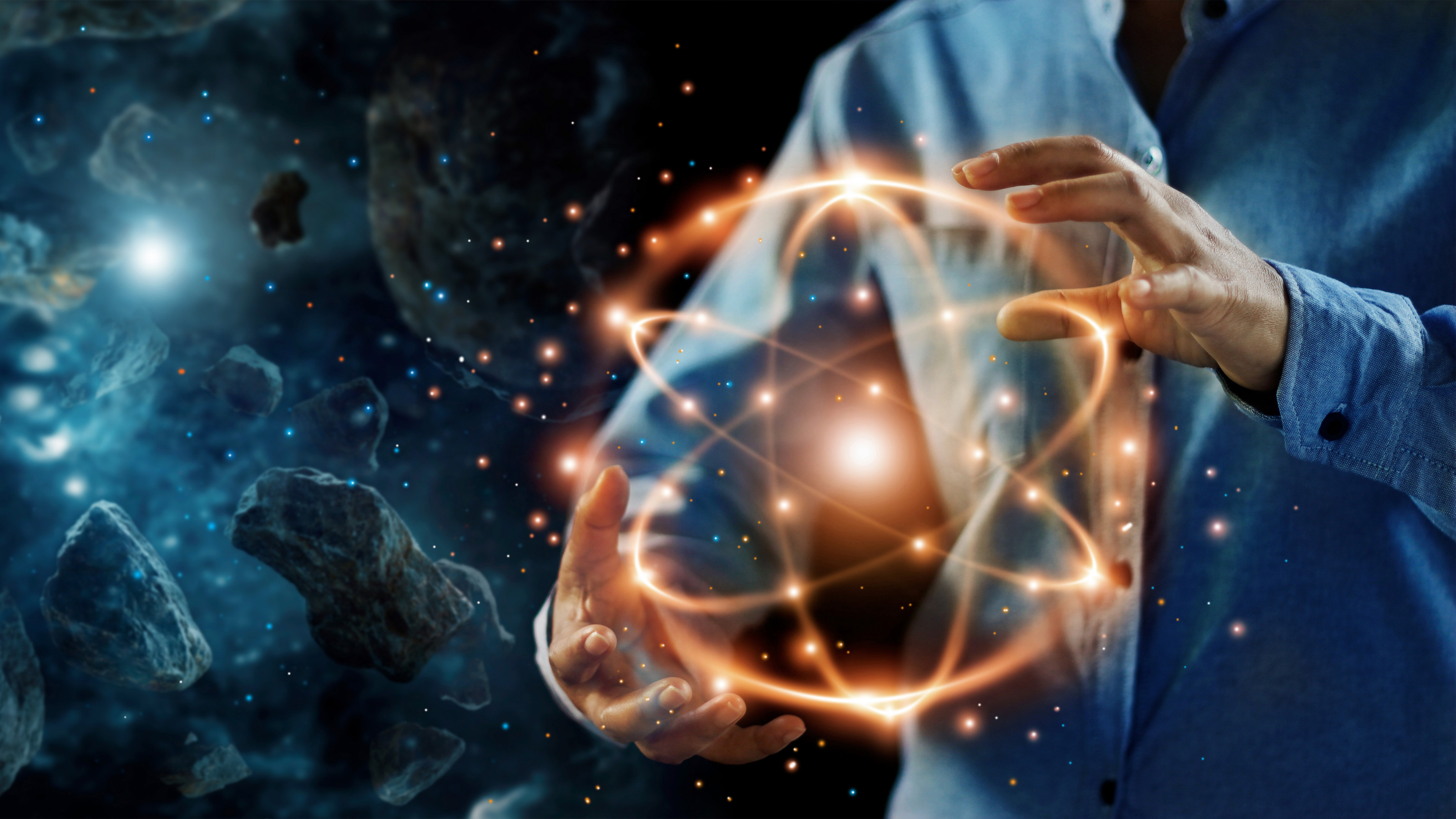On the smallest of physical scales, we have the fundamental, elementary particles, which build up to assemble nuclei, atoms, molecules, and even larger structures.
On larger scales, we have planets, stars, stellar systems, galaxies, clusters of galaxies, and vast voids between them, all contributing to the enormous cosmic web.
Overall, there are many different scales to view the Universe on. Here's the grand cosmic tour, from the extremely tiny to the unfathomably large.
Our Universe spans from subatomic to cosmic scales.
The journey from macroscopic scales down to subatomic ones spans many orders of magnitude, but going down in small steps can make each new one more accessible from the previous one. Humans are made of organs, cells, organelles, molecules, atoms, then electrons and nuclei, then protons and neutrons, and then quarks and gluons inside of them. This is the limit to how far we’ve ever probed nature.Credit: Magdalena Kowalska/CERN/ISOLDE team
All told, 13 different scales are presently known.
On the right, the gauge bosons, which mediate the three fundamental quantum forces of our Universe, are illustrated. There is only one photon to mediate the electromagnetic force, there are three bosons mediating the weak force, and eight mediating the strong force. This suggests that the Standard Model is a combination of three groups: U(1), SU(2), and SU(3), whose interactions and particles combine to make up everything known in existence. With gravity thrown into the mix, there are a total of 26 fundamental constants required to explain our Universe, with four big questions still awaiting explanation.Credit: Daniel Domingues/CERN
1.) Fundamental, elementary particles. Down to 10-19 meters, these quanta have never been divided.
When two protons, each one made of three quarks held together by gluons, overlap, it’s possible that they can fuse together into a composite state dependent on their properties. The most common, stable possibility is to produce a deuteron, made of a proton and a neutron, which requires the emission of a neutrino, a positron, and possibly a photon as well.Credit: Keiko Murano
2.) Nuclear scales. On femtometer (~10-15 m) scales, individual nucleons, composed of quarks and gluons, bind together.
Although you yourself are made of atoms, what you experience as “touch” doesn’t necessarily require another, external atom to come in actual overlapping contact with the atoms in your body. Simply getting close enough to exert a force is not only enough, it’s what most commonly occurs. READ MORE...
Overall, there are many different scales to view the Universe on. Here's the grand cosmic tour, from the extremely tiny to the unfathomably large.
Our Universe spans from subatomic to cosmic scales.

The journey from macroscopic scales down to subatomic ones spans many orders of magnitude, but going down in small steps can make each new one more accessible from the previous one. Humans are made of organs, cells, organelles, molecules, atoms, then electrons and nuclei, then protons and neutrons, and then quarks and gluons inside of them. This is the limit to how far we’ve ever probed nature.Credit: Magdalena Kowalska/CERN/ISOLDE team
All told, 13 different scales are presently known.

On the right, the gauge bosons, which mediate the three fundamental quantum forces of our Universe, are illustrated. There is only one photon to mediate the electromagnetic force, there are three bosons mediating the weak force, and eight mediating the strong force. This suggests that the Standard Model is a combination of three groups: U(1), SU(2), and SU(3), whose interactions and particles combine to make up everything known in existence. With gravity thrown into the mix, there are a total of 26 fundamental constants required to explain our Universe, with four big questions still awaiting explanation.Credit: Daniel Domingues/CERN
1.) Fundamental, elementary particles. Down to 10-19 meters, these quanta have never been divided.

When two protons, each one made of three quarks held together by gluons, overlap, it’s possible that they can fuse together into a composite state dependent on their properties. The most common, stable possibility is to produce a deuteron, made of a proton and a neutron, which requires the emission of a neutrino, a positron, and possibly a photon as well.Credit: Keiko Murano
2.) Nuclear scales. On femtometer (~10-15 m) scales, individual nucleons, composed of quarks and gluons, bind together.

Although you yourself are made of atoms, what you experience as “touch” doesn’t necessarily require another, external atom to come in actual overlapping contact with the atoms in your body. Simply getting close enough to exert a force is not only enough, it’s what most commonly occurs. READ MORE...
